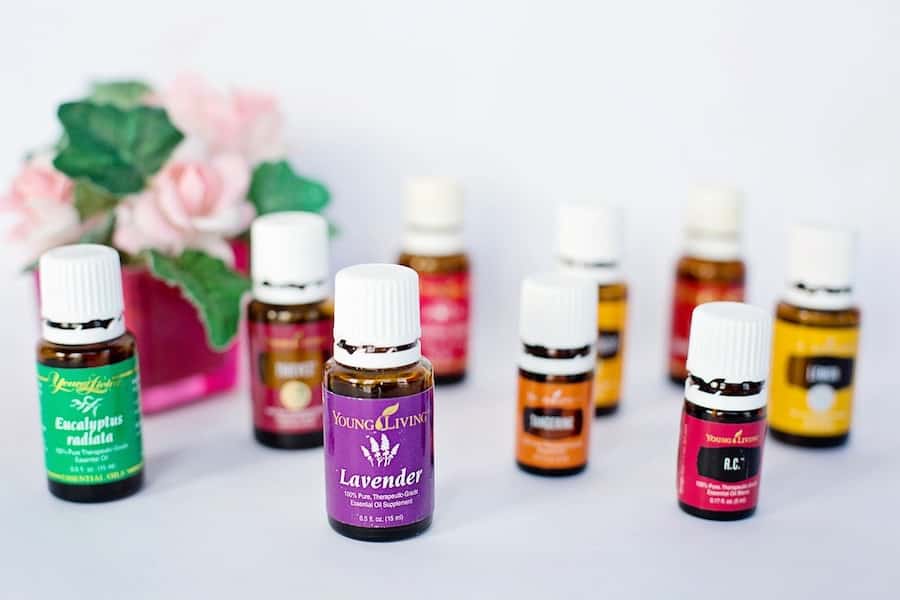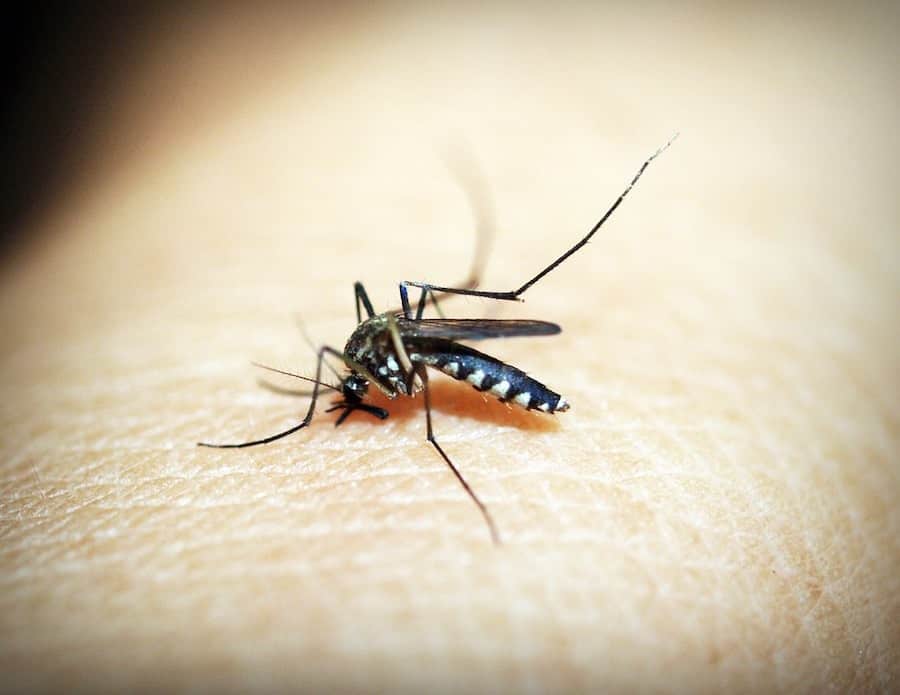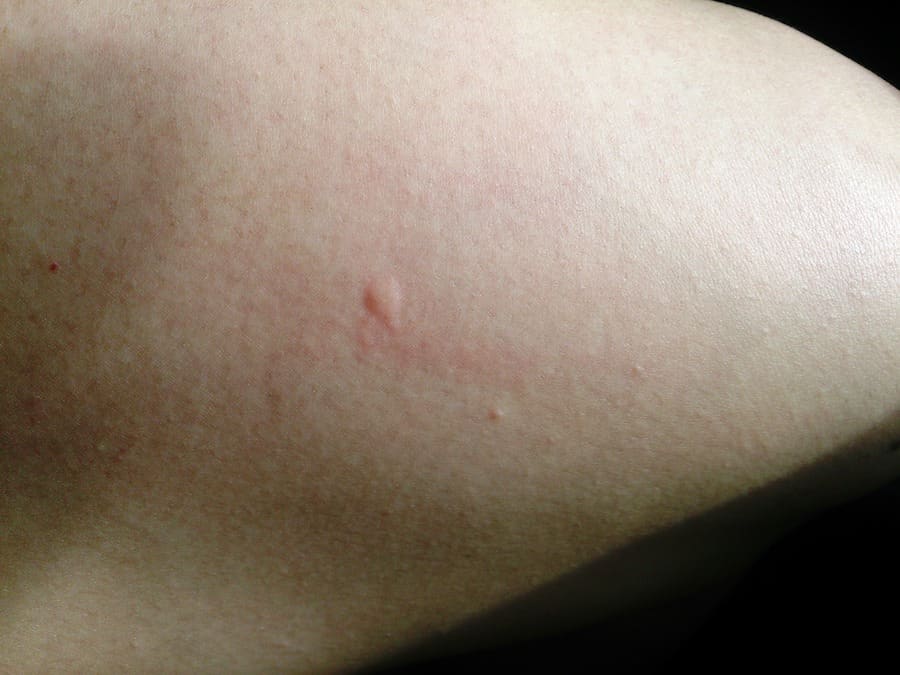Mosquito Control
Mosquitoes are not only annoying pests but they can be a hazard when it comes to our health too—as they are well-known carriers of different viruses and diseases. This is one of the primary reasons why mosquito control is an important task. By using certain methods, we can keep these unwanted insects at bay.
To eradicate a mosquito infestation, there are several areas to concentrate on. The information in this article aims to highlight those areas. You can then take the appropriate action to bring your problem under control.
Signs You May Have a Mosquito Problem
There are various indications that you may have a problem with mosquitoes. Regular sightings of mosquitoes are one of the most obvious signs.
You may see them moving across a glass surface or hanging around on or near your ceiling. Here are some other prominent signs and places to look out for.
Bites
If you find regular bites appearing on you, your loved ones or even a pet, then this is something to pay attention to. Bites can range from mildly irritating to quite swollen and inflammation could be apparent around the site.
Some people may be more sensitive to the bites and suffer an allergic reaction. The reaction is not due to the bite. It is actually caused by your immune system responding to the proteins in the mosquito’s saliva.
It is important to seek medical attention if you feel any uncomfortable symptoms, such as a fever or body aches. Some of the viruses and diseases transmitted by mosquitoes include:
- Dengue fever
- Zika virus
- Malaria
- Yellow fever
- Encephalitis
- Chikungunya
- West Nile virus
Frequent epidemics occur due to mosquitoes. The most recent ones included Chikungunya disease in 2013-2014 and the Zika virus epidemic in 2015-2017.
Buzzing
Mosquitoes make a high-pitched buzzing sound when flying, which can be quite annoying. You may notice this outside in specific areas of your yard.
Even more irritating, it could be something you will notice more at night when you are trying to sleep. The incessant buzzing in your ear can be extremely disturbing.
Clean Water
Mosquitoes like to breed where there is still water. Some have a preference for stagnant water but others prefer it to be fresh, clean water. You can spot them buzzing around areas where clean water is found such as:
Outdoor pet water bowls
Clean bird baths
Plastic pools
Asian Tiger and Yellow Fever mosquitoes are the species often found in these areas. Asian Tiger mosquitoes are aggressive, so chances are if they are present you will receive a few bites.
Stagnant Water
Be on the lookout if you have stagnant water around your home. This can often be found in areas you don’t even think about so a thorough search is necessary. These places include:
- Unattended bird baths
- Storm drains
- Clogged gutters
- Waste water that may pool around the yard
- Sewer-retention ponds
- Flower pots and water trays
Even if you don’t have water around your home stagnating in pots, there could be some nearby. Mosquitoes will travel around. Even if the water is a distance from your home, such as a pond or ditch, you could still experience problems with mosquitoes.
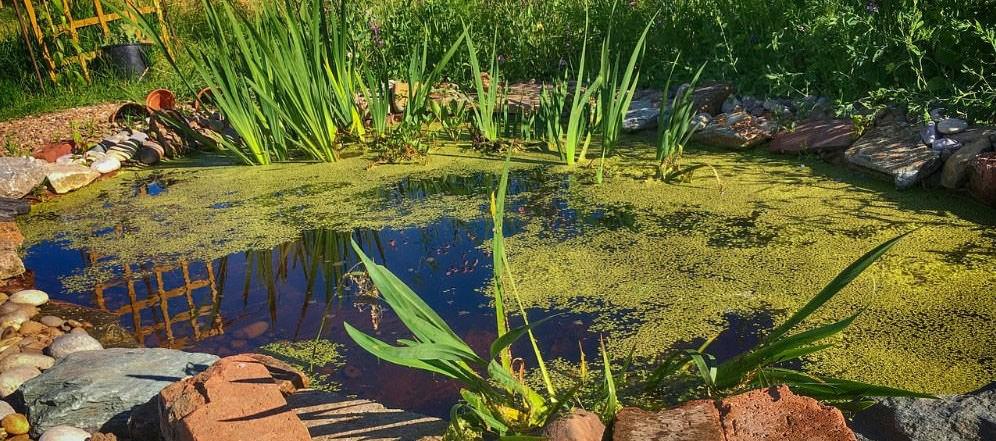
There are a few species that favor breeding around stagnant water. These include the Northern and Southern mosquitoes, and you are likely to spot them around dusk or after dark.
Lawns and Shrubs
Maintaining well-watered shrubs and pristine lawns can add to the appearance of your home. Doing this, however, means that mosquitoes may be attracted to your home as well. You also need to make sure you keep everything neatly trimmed.
Otherwise, you may find mosquitoes are hiding out in your bushes and grass. They like to hide and rest during the day. They will take cover among tall grass and in the leaves and foliage of shrubs and bushes.
Mosquito Control Principles
Mosquito control requires some careful planning. You need to execute an operation that will ensure continuous and effective control.
We are not looking to eliminate the entire population, as they do have their uses. Mosquitoes are sources of food for other animals such as bats and lizards. Their larvae are also a food source for aquatic creatures.
Due to the many viruses and diseases they carry and can transmit, it is vital for our own health that we act promptly.
Mosquitoes are one of the deadliest creatures on the earth. You may find this fact hard to believe for such a tiny insect, but it is true. Thousands of people are killed globally each year through mosquito-borne illnesses. In the US, numbers are not so high, but they are still significant.
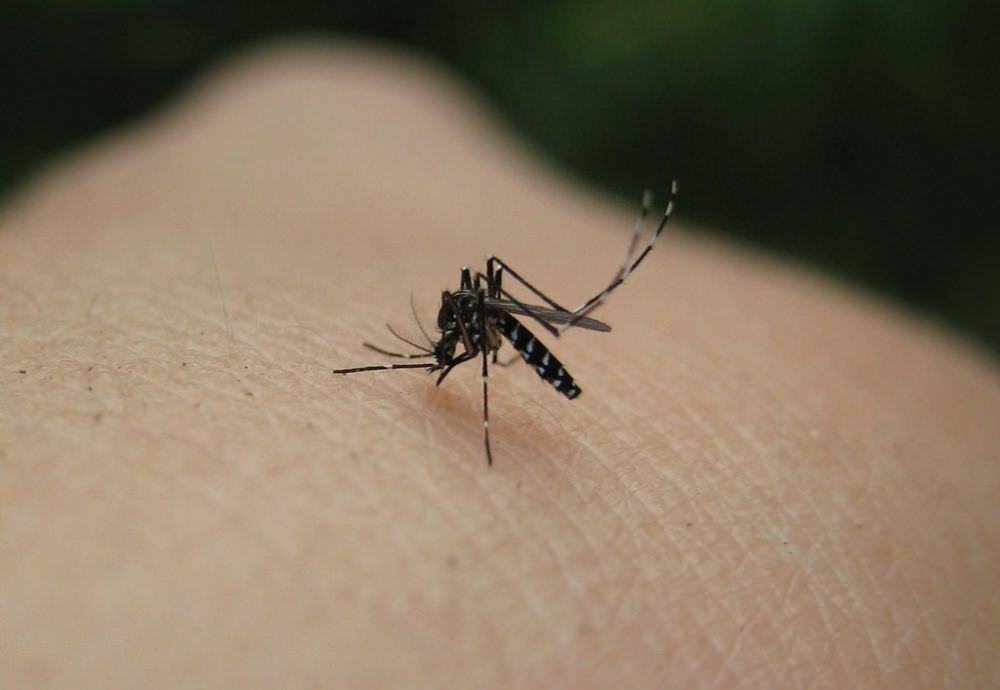
There are also many others worldwide who become temporarily incapacitated, due to the viruses and diseases the mosquitoes transmit.
Find the Mosquito Source
Finding the source of mosquitoes is an important factor in controlling them. Once they have emerged as adult mosquitoes they become much harder to control. Elimination of breeding sites is one of the most efficient and cheapest techniques for mosquito control.
Mosquitoes lay their eggs in standing water and to do this they only need around an inch in depth. As they only require a small amount of water it is easy to miss a potential source. You are not only looking for large sources of standing water.
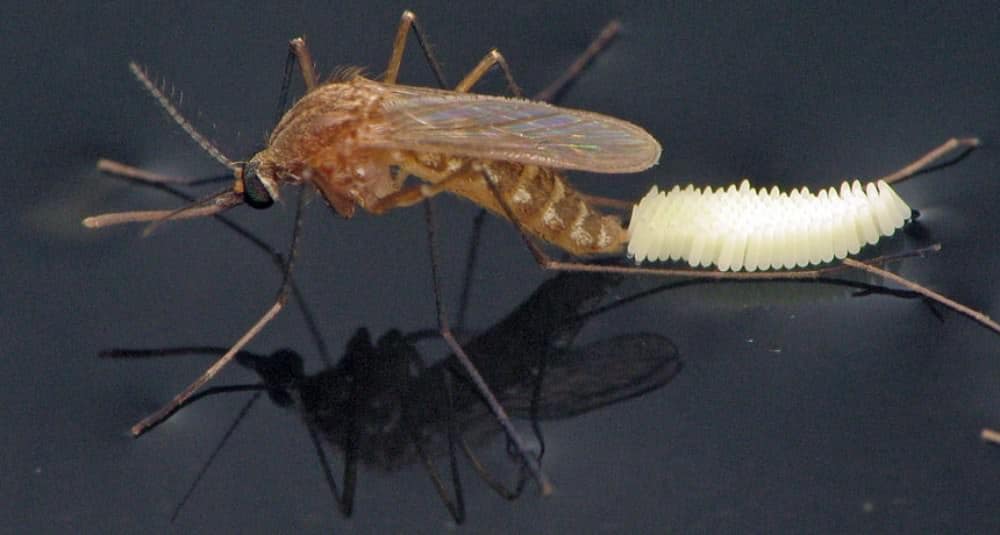
Finding all the potential breeding grounds requires a thorough search of the entire area. It could be an old toy truck left out in the yard by a child. Rain has filled the back with water and it now becomes a suitable place for mosquitoes to lay their eggs. Even a flower pot with the water tray beneath it is a potential source.
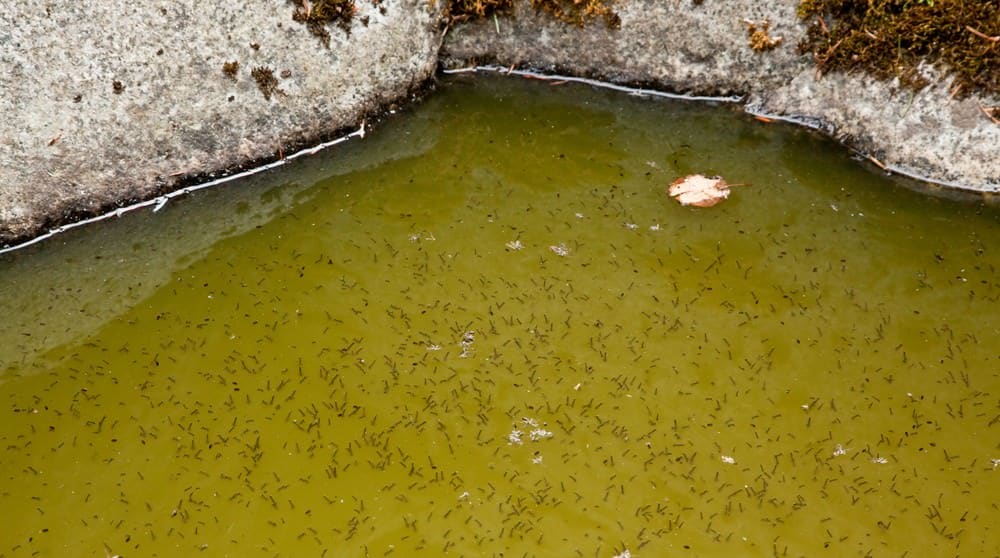
While the flowers may look pretty, you could soon change your mind when you realize mosquitoes are happily breeding there. Pick up any garbage that is lying around outside. Even an old jar will harbor water and become a potential spot for breeding.
Some species will lay their eggs on moist soil, trusting that it will soon become flooded again. Think about sprinkler systems and when you water your lawn. There could quite easily be areas where the water pools for a while before evaporating or draining away.
Eliminate/Treat Mosquito Breeding Areas
Now that the sources have been located, it is time to start eliminating the breeding areas. The mosquitoes prefer water sources that have an ample amount of organic waste in and around them. This is because the larvae will feed on the waste and any microorganisms living in the water.
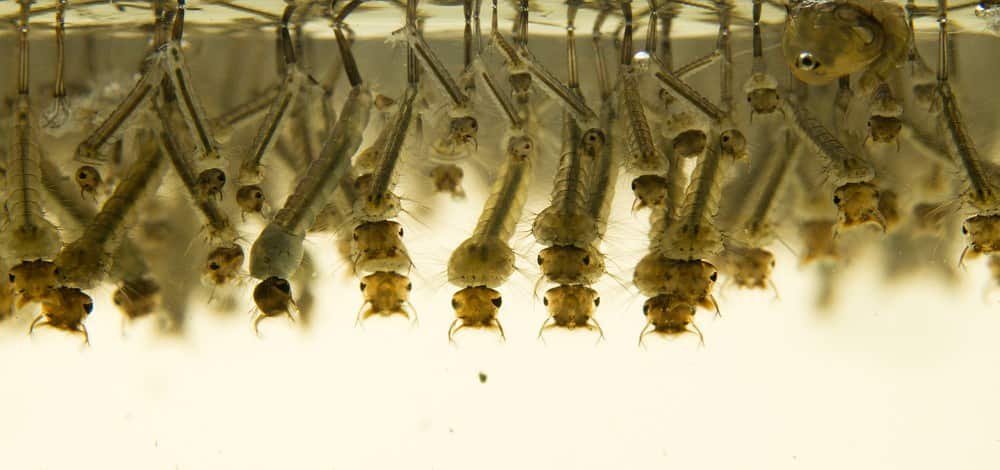
Eliminate the breeding areas by emptying out the water. Where it is possible, remove the source so it can’t fill up again. Getting rid of the water from small areas, like birdbaths, wheelbarrows, buckets, etc., should not be too much of an issue.
Problems arise when it is an area that the water can’t be removed from. This could be an and around the area of a swimming pool or a pond.
For these areas, you will need to take a different approach. It is not easy to remove the water from the decking around a pool, for example. You will need to use a regular treatment to prevent it from becoming a breeding ground for mosquitoes. Make sure you keep it as clean as possible to make it less desirable.
You can use pesticide products such as Mosquito Bits or Altosid. You can also use Mosquito Bits in other places that frequently collect water. It is an easy product to use by just sprinkling it in the water or on the soil you wish to treat. It is registered with the EPA as an insecticide and it causes no harm to humans, pets or wildlife. The treatment needs to be repeated every one to two weeks.
Altosid can be added to any stagnant water for effective mosquito control. It works as a growth regulator and is registered for use by the EPA. All you have to do is add it to the water and it will then provide up to 30 days of protection.
For ponds, you can use products which contain the active ingredient known as Bacillus thuringiensis (Bti). Adding these products to the water won’t cause any adverse effects to plants or pond life. If you prefer not to use a chemical, there are other options such as:
- Using a pump to create a constant movement of the water to deter mosquitoes
- Eliminate potential food sources such as algae from the pond
Taking these initial steps to effectively reduce the mosquito population is going to help in your quest. However, doing this is not going to solve the problem entirely. They could be breeding in your neighbor’s garden or somewhere further down the street.
Given that mosquitoes are known to travel, it is still likely that the adults will pay you a visit, despite lacking potential breeding areas.
Tips to Use When Eliminating Breeding Areas:
- Wear a shirt with long sleeves and long pants
- Use an insect repellent on your skin—make sure it is a registered product
- Empty and clean birdbaths and other water sources at least weekly
- Work together as a neighborhood to eliminate potential breeding sources
- Report piles of junk that have been discarded to the health officials
- Store your containers upside down or in sheds
- Don’t overwater plants or lawns as this could lead to pools of standing water
- Keep your gutters and downspouts free from debris so water doesn’t build up
- Use the right chemical treatments on swimming pools to maintain water quality
- Use a pond pump to circulate water: mosquitoes only lay eggs on still water
- If you have plastic pools, drain them when they are no longer in use
- Don’t allow water to collect on top of pool covers or tarps
- Keep any rain barrels sealed
Eliminate Adult Mosquitoes
The most effective way to kill adult mosquitoes is by eliminating breeding areas. They would then be unable to reproduce and larvae would not develop into adults. As we know, it is not possible to remove every potential breeding source.
There are many methods you can use to kill adult mosquitoes and the market for such products is not short on options. You need to make sure that you use reputable and registered products and that you understand the differences between them. The main difference being that some are simply repellents while some are used to kill.
Using repellents will not kill the mosquitoes. They will only serve to make your yard or home seem less attractive to them. This may control them for a while but in the long run, it will not serve in getting rid of them for good—they will return.
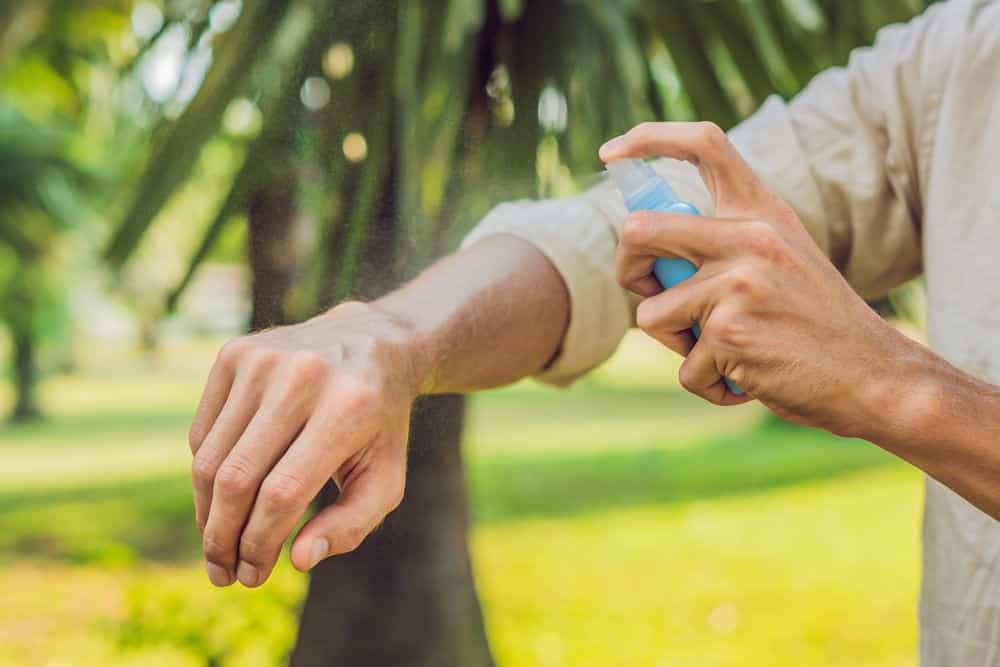
There are other methods you can use to kill the mosquitoes, although not all of them are efficient. The infamous bug zappers are one option, however, they are not likely to have much of a long-term impact, particularly outdoors.
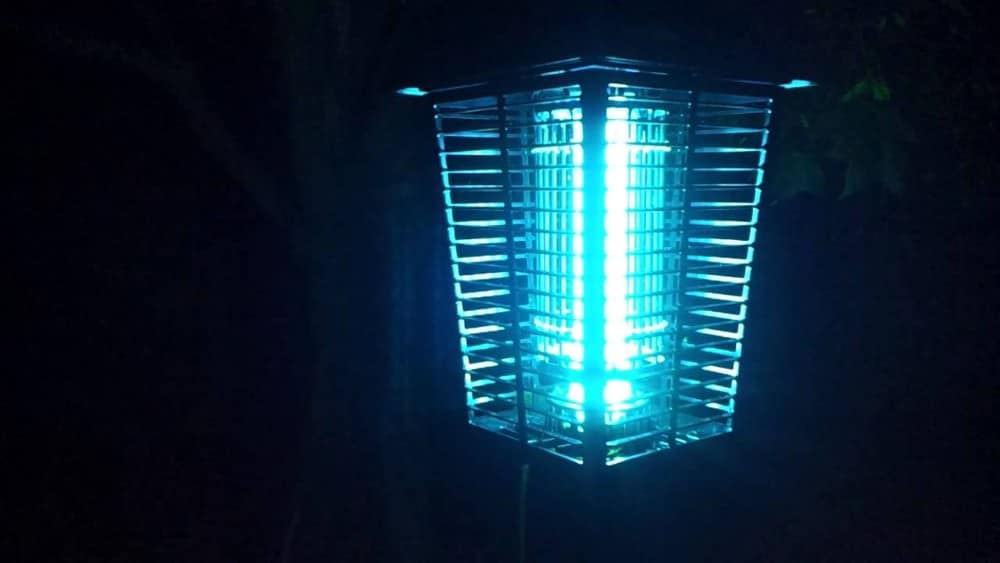
Pesticides are probably the most commonly used products to kill mosquitoes. Even so, over time, mosquitoes can become resistant to the chemicals. It will be beneficial to switch products occasionally. Before using, remember that pesticides can also have harmful effects on other insects and animals, you must be careful to follow instructions.
Adult mosquitoes tend to live in bushes and shrubs outdoors. They will feed on the plant nectar and hide in the shade of the leaves during the day. Here are some of the other methods you can use to eliminate mosquitoes.
Biological
Some people don’t like the idea of using harsh chemicals in and around their homes. The good news is that there are many alternative methods on the market.
For one, you can bring in some predators. That’s right—they will work to eliminate the pests by eating both the adults and their larvae. This strategy will harm the mosquitoes only without affecting any of the other wildlife in the area. If you have a pond, you could introduce fish, such as:
- Koi
- Minnows
- Bass
- Guppies
- Goldfish
You could also use a special type of trap with fish inside. Once the mosquitoes lay their eggs, the fish will then consume the larvae. You could use some of the fish listed above or you could opt to use Gambusia affinis (mosquito fish).
A trial that took place in California used these traps with a good level of success. Followed up by using a Bti, a resurgence of the population was prevented. There are other creatures that you could introduce into your environment as well. These include:
- Lizards or geckos
- Bats
- Spiders
- Crustaceans
- Dragonflies
- Swallows
- Purple Martins
- Waterfowl such as geese or ducks
You could also consider the use of ovitraps. This is a dark container which contains water. It will usually have just a small opening to prevent other animals from drinking.
At the top of the trap is a piece of mesh that the eggs will fall through. The eggs will then hatch into larvae, which then develop into pupae. When the adult mosquito is ready to emerge it is trapped beneath the mesh, unable to escape, where it soon dies.
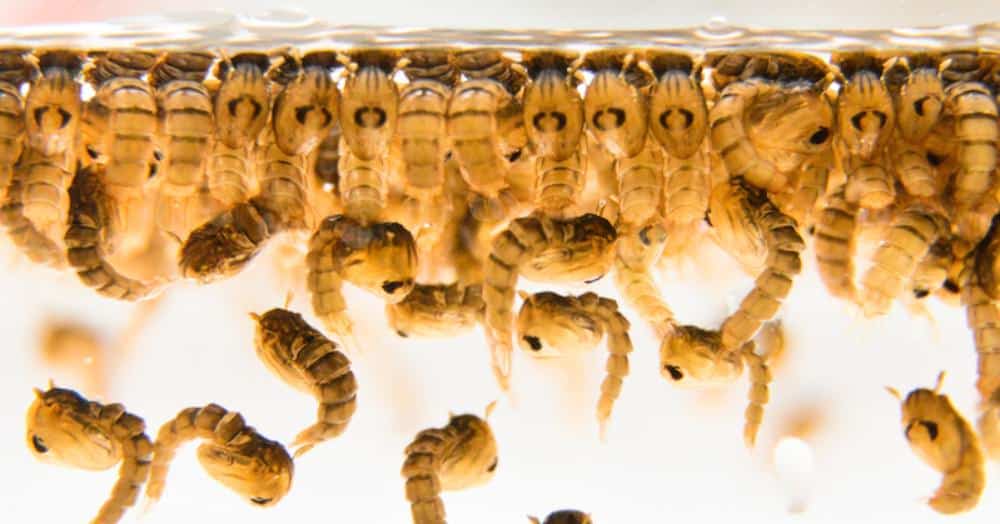
Another type of trap which can be used is a sticky trap. These trap the mosquitoes when they land and as they are stuck and unable to feed, they die shortly thereafter.
You could also introduce fungi to your environment, including Metarhizium anisopliae and Beauveria bassiana. These contain infectious agents that will kill the mosquito on contact.
As mentioned above, Bacillus thuringiensis israelensis (Bti) is another agent. You can buy Bti in pellet form and it is readily available in many home and garden stores.
During the stage where spores are forming, the Bti will make a protein crystal. This crystal is toxic for black flies and mosquitoes only. The crystals it forms are microscopic —small enough for the larvae to ingest.
As the larvae ingest them, the crystals turn into protein molecules that are toxic. The proteins then work by destroying the walls of the insect’s stomach. This then results in the mosquito being unable to feed, leading to its death within a couple of days.
Bti is very simple to use and all you have to do is add the ingredients to standing water. Their use will only have an effect on mosquitoes, fungus gnats and black flies. The water would cause no harm if ingested by pets or wild animals.
The downside to using a Bti product is that you need to keep reapplying it. You will need to do this every one to two weeks. Keep in mind that it only targets the larvae, not the adult mosquitoes.
Chemical
There are several chemical approaches that could be utilized. Some chemicals can be used safely without the risks that pesticides have on other animals and the environment.
Ingredients which are safe to use, that will attract the mosquitoes and ultimately lead to their death, include: carbon dioxide, sugary scents, lactic acid and more. Some products will include a combination of these, while others use different methods.
Females that are carrying eggs (gravid females) can be attracted to traps by lacing the traps with an insect growth regulator (IGR), such as pyriproxyfen. This mimics a natural hormone that mosquitoes possess.
You could also use a different version of the ovitraps mentioned above. This version contains an insecticide that will kill the larvae, and possibly adult mosquitoes too. The traps are effective and affordable—the disadvantage being that you will need multiple traps to cover an area such as your yard or garden.
Another method that can be used is adding a layer of kerosene or oil to a pond or pool of water. This will kill any larvae and also stops the females from laying eggs. Adding this to the water changes the water’s surface. It prevents larvae from pushing their breathing tube above the surface of the water, causing them to be starved of oxygen so they suffocate and die.
However, this method could also kill other animals, too. It would certainly kill any pond life. In this case, there are not so many places that it is suitable for use. Remember to always use caution when this approach is employed.
Residual Insecticides
During the day you can find mosquitoes resting among the vegetation. They like to take shelter in tall grass and among the shade of the foliage. Getting rid of the weeds and overgrowth will serve in some way to getting rid of the adults, but just this method alone will be largely ineffective.
Using a residual insecticide to spray the shrubs and bushes will work well in getting rid of mosquitoes. You will need to spray the foliage, lower limbs, and any tall grass and shaded areas.
When spraying, you should avoid any blooms or flowers. Spraying the flowers themselves could have a negative effect on insects that are important for pollination, such as bees and moths.
There are many effective insecticides that are readily available at garden stores. Make sure to buy a product that is registered, so that you know it is safe to use.
Insecticides are an affordable way to manage mosquito problems. You can also find some organic products which are not harmful to bees and other insects.
Larvicides
Where it is not possible to control the collection of water, you have the option of using larvicides. With sources of water that cannot naturally drain or seep into the ground, larvicides are ideal for use.
The course of treatment and how often it needs to be repeated will depend on the type and make of the product you have chosen. It will also be dependent on how much rain your area is likely to have during treatment. Of course, rain will wash away any product you have dispersed, as well as providing fresh sources of water for the mosquito to begin laying her eggs again.
Larvicides come in different forms, one of which regulates insect growth. It attacks the larvae with a hormone that mimics juvenile growth. This works by stopping the growth in the young stages of development, preventing maturity.
One of the most commonly used IGRs is methoprene. This comes in the form of a small brick which will dissolve over time, providing a gradual release of the larvicide.
Although it is effective, studies have shown that it can be toxic to other animals. The risk is minimal, but it should still be considered, particularly if you have pets.
Physical
Physical methods that you can use will not eliminate a large number but are ideal for use inside the home. There are numerous types of electric swatters available that can be used when you have a mild problem. These are battery-operated units which can usually be recharged.
Mosquito zappers can be used outdoors and inside the home. If used outdoors, they are unlikely to work well in an open area. Plus, you could be harming the insects which are beneficial to your garden. Indoors, however, they are more effective and a good way to kill unwanted insects in your home.
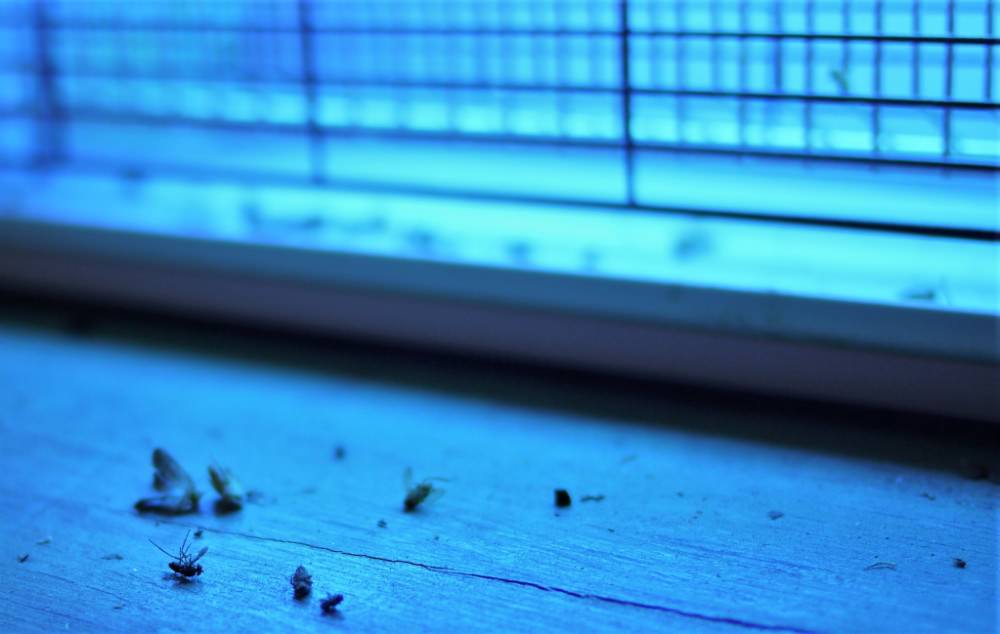
For higher effectiveness you will need to use some form of bait. One example would be a pheromone, called octenol. This comes as a patch which you attach to the zapper. This works by releasing the scent to attract mosquitoes.
There are special insect control zappers designed specifically for mosquitoes as well. Some already contain octenol and others also combine this with carbon dioxide. Adding carbon dioxide is beneficial as mosquitoes are attracted to the scent and amount that we release as humans.
For a do-it-yourself option, you can easily make a screen trap at home, by attaching window-screen material to the back of a fan. Mosquitoes are not particularly strong when it comes to flying. This makes it easy to use a fan to suck them onto a screen trap. Once trapped they will die from dehydration.
Actively Work on Future Prevention and Control
Now that you have eliminated the mosquitoes in and around your home, you want to make sure they stay away in the future. To do this you need to be vigilant, with routine checks to ensure no sources for breeding remain.
Continue to use the chemicals in areas where you can’t eliminate water sources. Keep the water as clean as possible, install a pump into a pond if you can, and remove any debris in your yard that could easily harbor water. Work as a team to keep them far away, if they are affecting the whole neighborhood.
You could even use repellent to deter them now that they have been eliminated. Using a repellent means they will be unable to find you and bite you. It will deter them from wanting to pay a visit to your yard.
You can use repellents which are applied to the skin. Plus, you can also use versions that are non-toxic and can be spread around your yard. It will be necessary to use these every few days.
People often choose to do this before they hold a party or event in their garden, to protect their visitors.
You could consider adding some new plants to your yard which will work as natural repellents too. The plants that work in this way are:
- Citronella
- Marigolds
- Catnip
- Rosemary
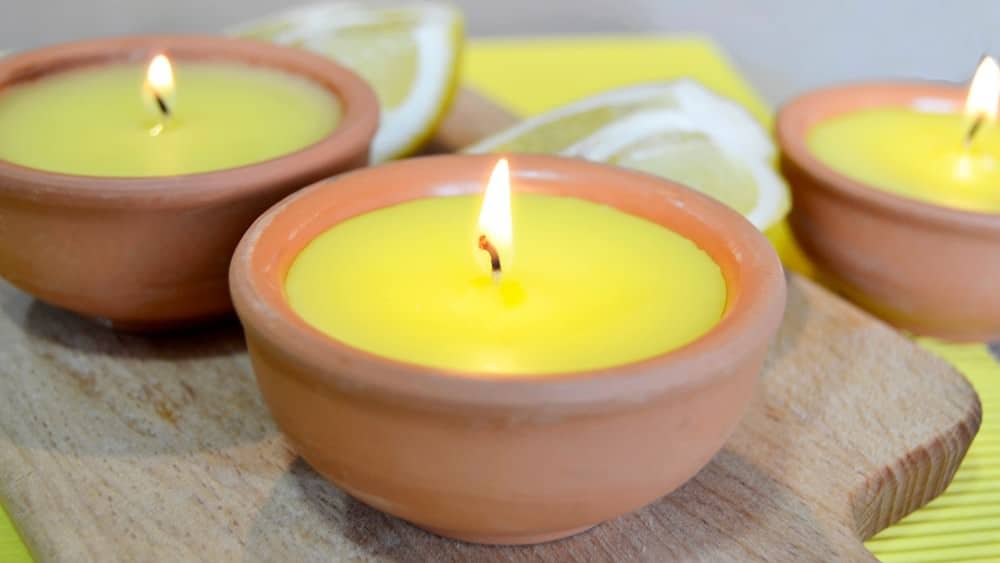
Some people may opt to use insecticide-treated materials in their home. You can buy a number of pre-treated products, including:
- Insect nets
- Wall hangings or curtains
- Bed sheets
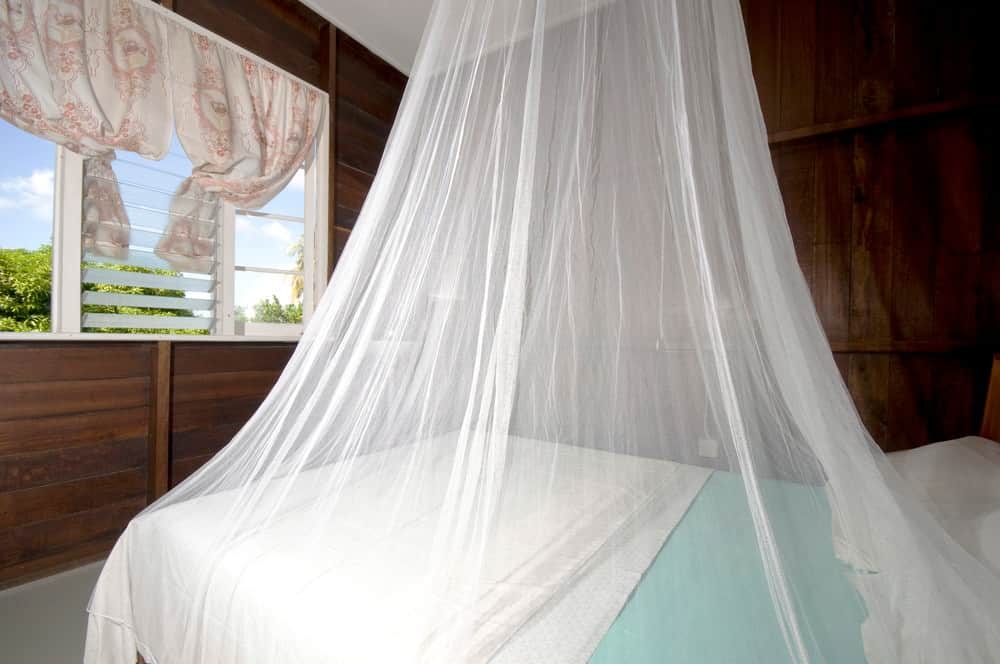
Considerations, Risks, and Precautions
When using control measures to eliminate mosquitoes, you need to consider the environment. This is particularly relevant if you are using chemical treatments.
You need to check out possible side effects that the treatments could have. Some ways to do this include checking for any long-term effects to plants, shrubs or soil. Find out how safe the treatments would be if pets or wildlife come into contact with them.
Do you have children who play in the yard, or neighbors’ children that come to visit? Consider if anything you use could have an adverse effect on them too. Make sure you read up on any and all products, before buying and putting them to use.
You want to eliminate the mosquitoes due to the potential viruses and infections they put you at risk of. What you don’t want is to introduce further problems by using the incorrect chemicals.
When you are using any chemicals, pesticides or insecticides, follow the instructions carefully. Make sure you use the correct equipment and pay attention to warning labels. Ensure you wear the appropriate attire when handling such products.
Make sure to follow guidelines, especially check whether you need to keep pets or children away for a period of time after use. By sticking to the products that are registered for use and reading the labels thoroughly, potential risks are reduced.
If in Doubt, Hire Professionals
While you can tackle the problem yourself, there are also many professionals that can help. If you have any doubts about controlling the problem on your own, seek their help.
This will ensure that the job is carried out correctly and safely. You may not feel comfortable handling chemicals yourself or maybe you’re not certain the problem is even mosquitoes. That’s what professionals are for.
You pay them for giving you a service that will meet your needs. Before hiring them, you need to do your research. Just the same as if you were choosing a chemical, you need to choose the right person for the job.
Choose someone who is well-known and reliable. Don’t just aim for the most cost-effective. Ask around for recommendations. Look at customer reviews online to find out just how successful their services are.
It may be a little more expensive but, at the end of the day, you want the problem to be managed effectively. You don’t want to cause more harm than good by tackling it yourself and getting things wrong.
It may be that you just need advice on the right chemicals or treatments to use. If this is the case, choose someone who is independent. Someone from an insecticide company is likely to recommend their own products—regardless of what that product is.
Summary
Mosquito control is a serious issue. Mosquitoes may be the tiniest of insects but they have the ability to cause some huge problems. With the small and irritable bites, they can cause severe reactions. They can also create other health issues which can have a major impact on humans.
You don’t have to worry about tackling the problem alone. You can get the whole neighborhood on board to help eliminate and control the problem in your area. There are many professionals who you can seek advice from, or hire them to provide a service for mosquito control.


